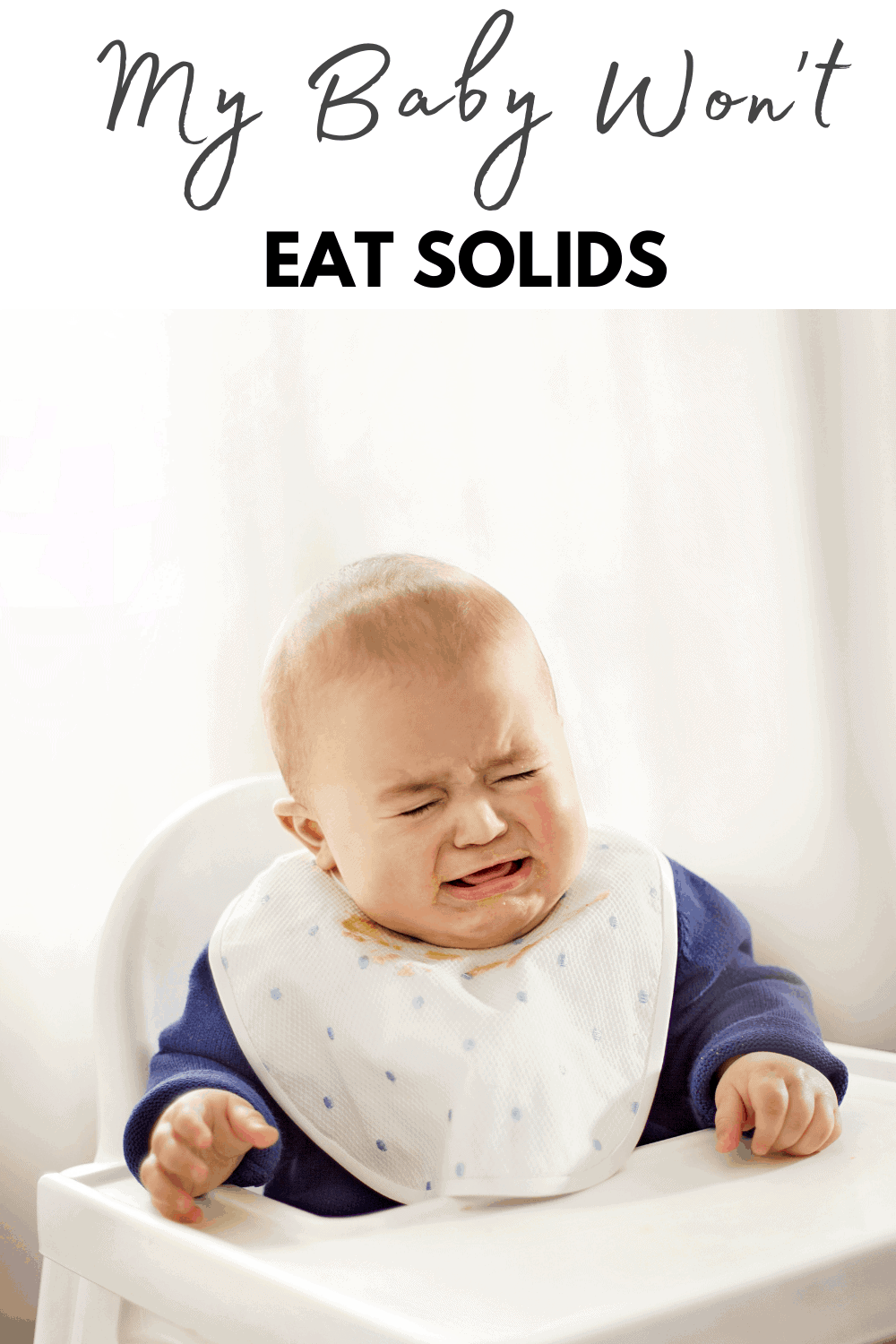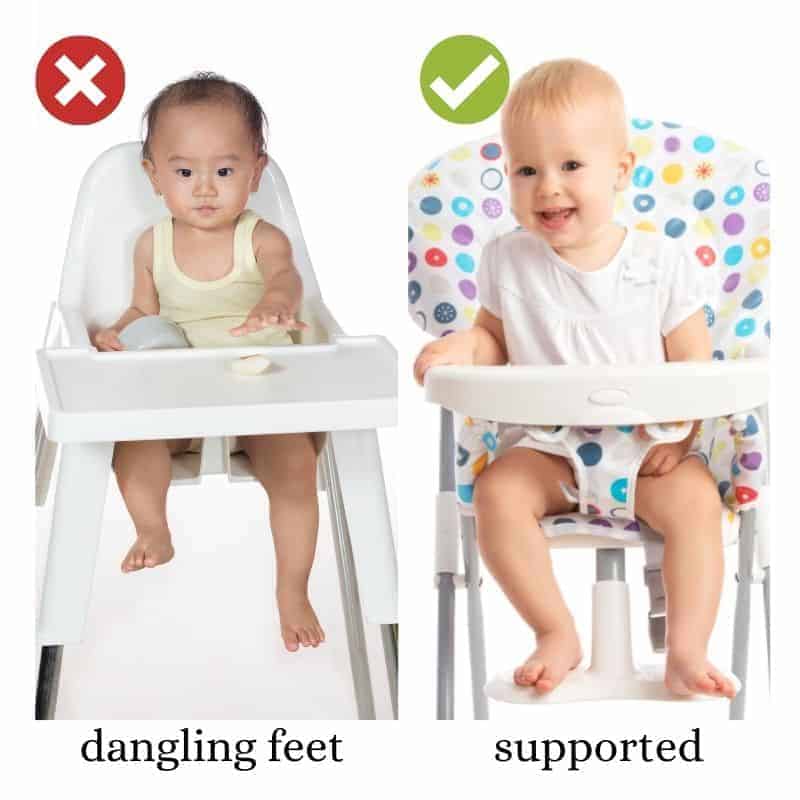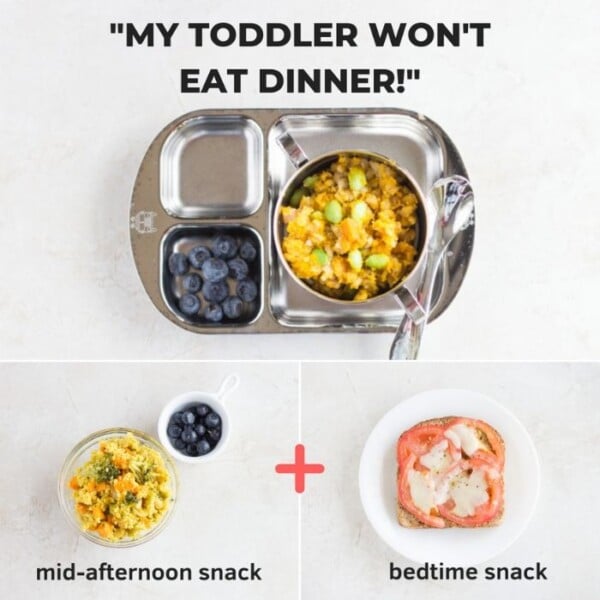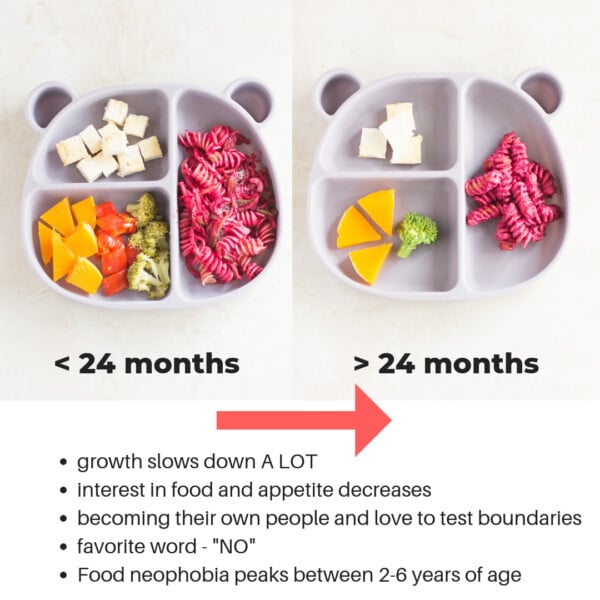This post may contain affiliate links. Please see our disclosure policy for more details.
Does your baby love milk and won’t eat solids? It’s common for babies to refuse food when first starting solids. Here are some top reasons behind the food refusal and what what you can do to help move things along and get your baby interested in eating.

Your baby is not ready to start solids
If your child is younger than 6 months, it just may be that they aren’t ready for solids. Grab this FREE handout to evaluate whether or not your baby is developmentally ready. If they’re not, consider waiting until they are. It will make such a HUGE difference.
If your baby is ready to start but refusing to eat solids
Here are some applicable tips:
The number one thing you can do is model!
Babies are like sponges and they learn by watching. Have your baby join the family during mealtimes as much as possible. The more they see everyone enjoying their food, laughing, and having a grand ole time, the more they’re going to want to be a part of it.
We had our baby girl join us at the table when she was 4 months old. I truly believe that this was instrumental in teaching her that “oh, food goes into my mouth” Exaggerate chewing. This is not the time to mind your table manners.
Ensure baby is sitting properly.

Baby’s hips, knees, and feet should all be at a 90 degree angle. No tilting back or leaning. If your high chair is too big for your baby, you can roll up a small towel and place behind their back for support and stability. You also want their feet to be supported.
Why is this so important? It’s very difficult to maintain good posture and core strength without a place for your feet to rest on. The foot rest helps ground them and provide that core stability.
Think about when you try to eat from a really tall bar stool. You may notice yourself automatically wrapping your feet around the pole for stability. Your baby won’t be able to concentrate on eating with their feet dangling.
Here’s my number one choice!
Make sure your baby comes to the table hungry
but not so hungry that they’ll get frustrated. I want to add that while yes it’s good to have some structure, that doesn’t mean you have to be super rigid and offer milk at the exact same times every day. Just make sure that there’s some gap in between milk and solid food.
Avoid feeding them yourself
I know it’s hard. But if you continue to do so, your baby will always choose to take the easy way out. So regardless of which feeding method you choose, practice responsive feeding.
Don’t serve bland food
The fact is, babies are born with more tastebuds than us! And they want flavor! So if you were told that your baby needs to start out with bland food, it simply isn’t true.
In fact, they even prefer flavored breastmilk! In a research that studied how babies responded to different concentration of garlic in their mother’s breastmilk, it was found that babies stayed attached to the breast for longer period of time and sucked more! So fascinating, right?
All this to say, don’t be afraid to spice up your baby’s food with herbs, spices, and aromatics!

Consider the size and texture of the foods
Your baby may prefer a thinner or thicker puree. Perhaps they may want to skip the purees altogether and dive right into finger foods. Your baby might want to feed themselves or vice versa. Observe your baby closely and follow their lead.
Here’s an in-depth post on purees vs. baby led weaning vs. combination approach to feeding. They are all great!
Now, if you start with purees, it’s really really important that you don’t get stuck at that stage. You need to move forward with texture no later than 9 months. Otherwise, it can lead to limited dietary variety, greater likelihood of food refusal and chewing difficulties down the line.
If you’re stuck on purees, I am here to provide guidance in moving forward with texture.
What to do:
Depending on your comfort level, you can take the gradual approach or dive right into serving all these different textures from the start. They are all safe.
It’s normal for your baby to resist texture at first because it’s unfamiliar and feels unsafe. But don’t fall back. Keep moving forward. By no means rush them, but you do need to gently and lovingly pressure/challenge them.
Learning to chew and swallow different textures takes time to master so keep giving them plenty of opportunities to practice! That’s the best thing you can do!
I can’t emphasize this enough – focus on Introducing them to a wide variety of flavors and textures from the start! This will not only prevent boredom from eating the same foods day in and out but also will lead to greater acceptance of different foods and thereby reduce pickiness later on.
If you need a step-by-step guidance on this, my 3 month meal plan program will be an incredible resource!

Do you want to minimize picky eating and set a solid foundation for a lifetime of healthy eating habits?
Check out this 3 month mastering self-feeding program! It’s the closest thing to me being in your kitchen
Be patient
Your baby will most likely just suck on the food at first because that’s all they know at this point. If your baby smashes, squeezes, squishes, throws the food, that’s ok! All that counts as exposure and they’re learning with each and every exposure to food.
If your baby makes faces or shivers when they taste food, it doesn’t necessarily mean they don’t like the food. These are normal responses and part of learning. Your baby may do a lot of spitting. Don’t be disappointed though. This, too, is an important part of learning to self-feed safely! You want your baby to spit out food that isn’t chewed properly or isn’t safe to swallow.
Chewing and swallowing won’t happen immediately. It takes about a month or two to develop this skill but your baby may learn to do so more quickly! So keep your expectations in check and be consistent and patient.
Embrace the mess
There are so many benefits to messy eating! Your child’s ability to engage in messy play will be highly correlated with their ability to tolerate different textures in their hands and therefore their mouth. If your child seems disinterested and won’t even touch the food, it’s even more important that you incorporate some of the strategies mentioned in the post.
Create a happy, safe eating environment
Make the table a place that exudes positivity not a place to be feared. So don’t come to the table anxious and stressed out. If your baby’s fussy or cries when you bring them to the high chair, take a break from it and try a different location or set-up so they don’t develop a negative association with mealtimes.
If your baby cries or fusses while eating – food may be too challenging, wants something else, or may be due to reasons unrelated to food. Maybe they’re too tired, teething, or feeling ill. Watch this video to learn what you can try.
If your baby is constantly unhappy during mealtimes, then it may be a good idea to take a break from solid food for a day or two and try again. This is so your baby won’t develop a negative association with mealtimes.
When to seek professional help
If your baby is constantly throwing, refusing to touch food, cries as soon as you put them in the high chair, gagging to the point of vomiting, consider seeking support from a feeding specialist. Catching any underlying issues early on can help make mealtimes enjoyable and successful.
What about food waste?
Let’s talk briefly about food waste. It is inevitable during the first month or so because your baby won’t actually eat much of the food that’s served. Do keep the portions small (you can always offer more if your baby wants more. Always follow their lead).
What I also want to encourage you to do is to think long-term. While it may seem long, this short term waste of your baby being allowed to explore their food will result in a joyous, mindful eater who won’t waste as much food in the years ahead.














